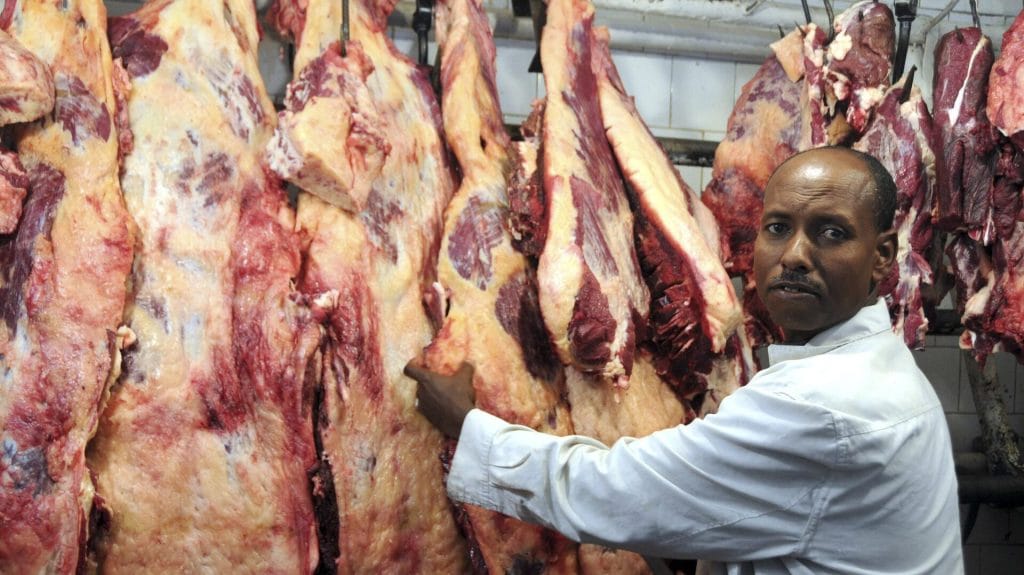“In Africa, people eat meat only once a year.”
This line—often repeated in charity appeals and social commentary—evokes a powerful image of scarcity. But is it true? According to Wall Africa Journal’s (WAJ) investigation based on verifiable data, extensive field reports, and expert analysis, the claim is overly simplistic, misleading, and masks a much more complex reality.
Beyond the Stereotype: A Diverse Continent with Divergent Diets
According to Statista (2025), Gabon topped Africa’s per capita meat supply in 2020 with 67 kg per person, followed closely by Seychelles (62.4 kg) and South Africa (59.8 kg). Meanwhile, countries like Burundi (3.1 kg) and the Democratic Republic of Congo (3.2 kg) sit on the other end of the spectrum.
This stark contrast underscores a fundamental truth: Africa is not a country. It is a continent of 54 diverse nations with vastly different economies, livestock systems, culinary cultures, and dietary patterns. Where urban populations in South Africa might enjoy daily access to beef, rural households in parts of Central Africa may rely on meat only occasionally.
The Export Paradox: Africa Feeds Others Too
Contrary to popular belief, Africa is not just a consumer—it is also a major exporter of livestock. WAJ has confirmed that countries such as Somalia, Sudan, Ethiopia, Kenya, Chad, and Mauritania export millions of live animals annually, especially to Gulf countries during religious festivals like Hajj and Eid al-Adha.
Somalia alone exports around 5 million live animals each year, with Mogadishu’s ports serving as major export hubs. These numbers, verified by the World Bank and the FAO, make Somalia one of the world’s largest livestock-exporting countries by volume.
Namibia, on the other hand, made history as the first African country to export beef to the United States, sending 25 tonnes to Philadelphia in 2020. It aims to scale up exports to 5,000 tonnes annually by 2025 under the African Growth and Opportunity Act (AGOA).
The Production Challenge: Infrastructure vs. Potential
Africa’s meat production nearly doubled from 12 million tonnes in 2000 to 20 million tonnes in 2020, yet the continent accounts for just 6% of global output. This is not due to lack of livestock—it is due to systemic barriers. Traditional breeds are resilient but yield less meat. Poor veterinary care, weak cold-chain infrastructure, informal markets, and limited access to finance all curb growth.
In countries like Ethiopia and Tanzania, which hold Africa’s largest livestock populations, exports still comprise less than 2% of total national export commodities. In contrast, South Africa’s vertically integrated beef industry produced over 1 million tonnes of meat in 2020, powered by high-tech feedlots and modern transport and refrigeration systems.
WAJ’s review of the ReSAKSS and IOA reports reveals that outbreaks of diseases like foot-and-mouth often shut down entire export chains. In 2022, Botswana had to cull herds to regain EU market access, showcasing the fragility of gains made without sustainable health infrastructure.
Can Everyone Afford Meat? Not Yet—But the Trend Is Up
While it is true that in some rural or conflict-affected regions meat is still a luxury, this is not the norm across Africa. Rising incomes, rapid urbanisation, and shifting consumer preferences are fueling domestic demand for meat in Ethiopia, Kenya, Nigeria, Ghana, and beyond.
For instance, Kenya produces around 260,000 tonnes of beef annually, yet it still cannot meet its own domestic demand. In Nigeria, beef demand surpassed 450,000 tonnes in 2023, but only about 370,000 tonnes were locally available—driving prices up and imports in.
Jimmy Smith of the International Livestock Research Institute (ILRI) notes, “Smallholders already provide over 70% of animal-sourced foods consumed in Africa. Connecting them to markets through better roads, local abattoirs, and veterinary services can transform the sector.”
The Environmental Dilemma
As production expands, environmental concerns also grow. WAJ found that methane emissions from cattle, soil and water degradation, and disease risks are rising. Research from Oxford University (2018) suggests radical reforms in global meat systems are needed to avert climate catastrophe.
But this doesn’t mean halting livestock growth altogether. “Improving the productivity of animals reduces emissions per unit,” says ILRI’s Smith. A cow producing 10 liters of milk emits far less per liter than one producing only two. Efficiency is the new sustainability.
What the Future Holds: Private Sector, Policy and Pan-African Vision
From mega feedlots like Karan Beef in South Africa to smallholders in Niger, the future of Africa’s meat industry lies in integration and innovation. According to WAJ’s analysis of the FAO’s projections, poultry and pork will dominate future production growth, while beef will increasingly be seen as a premium product.
The private sector is stepping up where public investment lags. Yet public policies are vital too. As of 2023, fewer than 10 African countries have met their Maputo Declaration promise of investing 10% of budgets in agriculture.
Without infrastructure, rural development, or veterinary regulation, the continent risks becoming ever more reliant on expensive imports. WAJ estimates that Africa’s food import bill could reach $125 billion by 2030—one-third of it meat and animal-based foods.
From Myth to Momentum
Is it true that people in Africa eat meat only once a year? For some, in the poorest rural regions, yes. But for the majority, the picture is far more nuanced. WAJ’s findings reveal a continent with rich livestock traditions, rising demand, expanding exports, and a private sector poised for rapid growth—if supported by wise policy and infrastructure reform.
Africa is not starving for meat—it’s fighting to transform how meat is produced, traded, and consumed.



